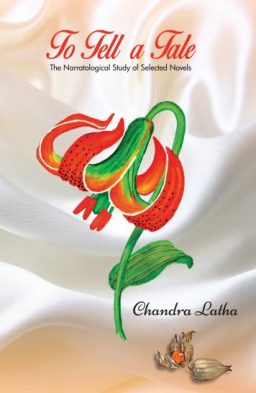
To tell a tale-29
(Chapter-7 Part-6)
-Chandra Latha
Heteroglossia as defined by M.M.Bhaktin is the base condition governing the operation of meanings in any utterances. It is that which insures the primacy of the context over text. At any given time, at any given place, there will be set of conditions–social, historical, meteorological, physiological-that will insure that the word uttered in that place, in that time will have a meaning different than it would have under any other circumstances.
The contextual meaning of each narrative of the selected novels is discussed in the related chapters. The context clearly defined by the concept of the novel. The figurative speech that decors the context is provided by the concept of the theme. All the five novelists presented their best in the execution of the respective novelistic narratives.
The context of The Bungler is simple. It is the life of an incompetent man. The heteroglossia is achieved with its multifold approach to life, inner and external, personal and social, philosophical and psychological, feudal and democratic approaches. In Puppets, it is the existential crisis of the self and the society, rural and urban, politics and human values, beurocracy and hegemony, caste system and atrocities, state and free word, lie and truth, psychological and philosophical. In The Tin Drum, it is the common guilt, German consciousness, war and politics, Nazism and atrocities, moral values, failure, loss. One hundred years of solitude speaks about the life of a family and Macondo over generations, the existential crisis, solitude and resistance, Banana massacre, freewill, fact and fiction, relation and destruction, man and nature. This kind of multiple approach to the theme naturally evolves an organic narrative with fine blended context and concept .The five selected novels surpassed such milestones and their heteroglossia existed within the text enabled them to achieve the sui generis.
Every narrative of these five novels is unique in its own way as each novel represents a certain inner string that binds the multiplicity of the theme and form. Yambo, in the Mysterious Flame of Queen Loana mentions his narrative as a narrative of failure. “Words fail me”, says the unreliable narrator of The Tin Drum, who successfully presents a narrative of guilt. This guilt is not his personal confession, but the guilt of his country and his people.
The Bungler, Puppets and One Hundred Years of Solitude are the narratives of failures as well. But, these narratives can be called the narratives of disillusionment. If these novelists concluded their narratives with the failure, guilt, disillusionment, they would not have survived as long as they are now. The act of narration itself is the strong instinct for the survival. Hence and thus, all the novelists are emphasizing the basic instinct of survival and passion to prevail. In their failure, guilt and disappointment, the narrative explodes with the secrets of life. What Ian Sansom observes about the novel The Mysterious Flame of Queen Loana is true for other four selected novels as well. “At the heart of the book is clearly a claim about what it means to be human, what it means for ourselves to be created and shaped through contact with literature and with art.”
The constant effort of the human beings to understand the relation between the internalization of the external world and the externalization of the inner world, is scholastically explored by all these novelists in their constant pursuance of the humanness. The human nature, human behavior, and human relations are the narrative machines that launch their thought, action and creation. The subjectivity and objectivity exist simultaneously. As George Lukacs rightly observes, “Subjectivity, Intertextuality, reference, ideology underlie the problematized relation between history and fiction in post-modernism. (George Lukacs. Grand Theory I. Theory of the Novel. A Historical Approach. Ed.by Miachael Mckeon. 2000. John Hopkins University Press. Pg.844) to the narrative for the process of the narrativization has come to be seen as the central form of human comprehension and imposition of meaning and formal coherence in the chaos of the events. Narrative is what translates knowing into telling.” (George Lukacs, Pg. 844)
The Krystallnatch or the breaking glass is represented in The Tin Drum as the clairvoyant Oskar shrieks and breaks glasses. Yambo in the Mysterious Flame of Queen Loana, the unbreakable glass plays an important role. It represents the broken promises and the voice of resistance of Bruno. There is glass tumbler that Sitarama Rao insists his wife to serve him bed coffee in The Bungler. And, Macondo at its peak become a city of glass.
Each novel has certain fixation to colors: Yellow in One hundred years of Solitude, Red and white in The Tin Drum, Black and Grey in The Mysterious Flame of Queen Loana. The international success of these novels is quite a remarkable achievement. Eco is surprised at the international success of his The Mysterious Flame of Queen Loana, as he thought that novel is relevant for particular generation of Italians. As Eco himself observes, this was possible because of the universality of the memory and curiosity of strange cultures. This applies to the international success of other German and Spanish novels as well.
The universality of the themes is the bottom line for the global approachability. Moreover the human curiosity of distant cultures enabled that. The other way, the universality that the genre, novel, achieved by the time of these novels are written is also a significant reason for it. The Bungler derived it’s inspiration from western novel. Puppets from Norwegian novel. But, both the novelists complimented these defined structures in their own way. Gopichand denies any suffocating narrative frames. He propagates frameless narratives. The montage of unique incidents created an independent narrative style unique to itself. It is rare to implement silence as the powerful narrative tool and the caricatures and graffiti as a significant and rare narrative device ever employed. Krishna Rao applies ancient knowledge of Indian Aesthetics with the ultra modern western influenced genre and achieves the sui generis. Eco uses a doodle of Napolean to indicate the status of the mind of Yambo. Gunter Grass brings his concepts of art, the unique surrealism, mysticism, finely blended into magic realism. Marquez creates an matrix of fact and fiction with words soaked in the magic. While realizing this ambitious attempt to capture multiple lives during one hundred years of solitude into one single narrative, Marquez invokes more vividly, with the invocation of oral tradition. Umberto Eco opts for more sensible text with the openness for multiple interpretations. His remarkable usage of multimedia makes the novel more rich and vibrant. The critical appreciation received over the half century and the commercial success makes these novels, not just literary novels but also, popular novels. Their popularity is rooted in the humanness of the novel where the human nature is depicted in the most possible human situations that human mind can perceive and relate to both temporal and extra temporal human identity.
*****
(Contd..)

Chandra Latha, writer from Nellore won Telugu Association of North America award in 1997 for the novel “Regadi vittulu”. Her other novels are Vardhani(1995) and Vallu veellu paarijaataalu (2011). Her short fiction includes nearly 80 stories compiled in nenu nanna navutha (1996),Idam shareeram (2003) and vivarnam(2007). Her non-fiction are (Fish can fly!) ”vacche daretu(2010), itanala kadaku eeboothi boTlu(2010). And also published her blogposts in a book madata pejee(2010).
